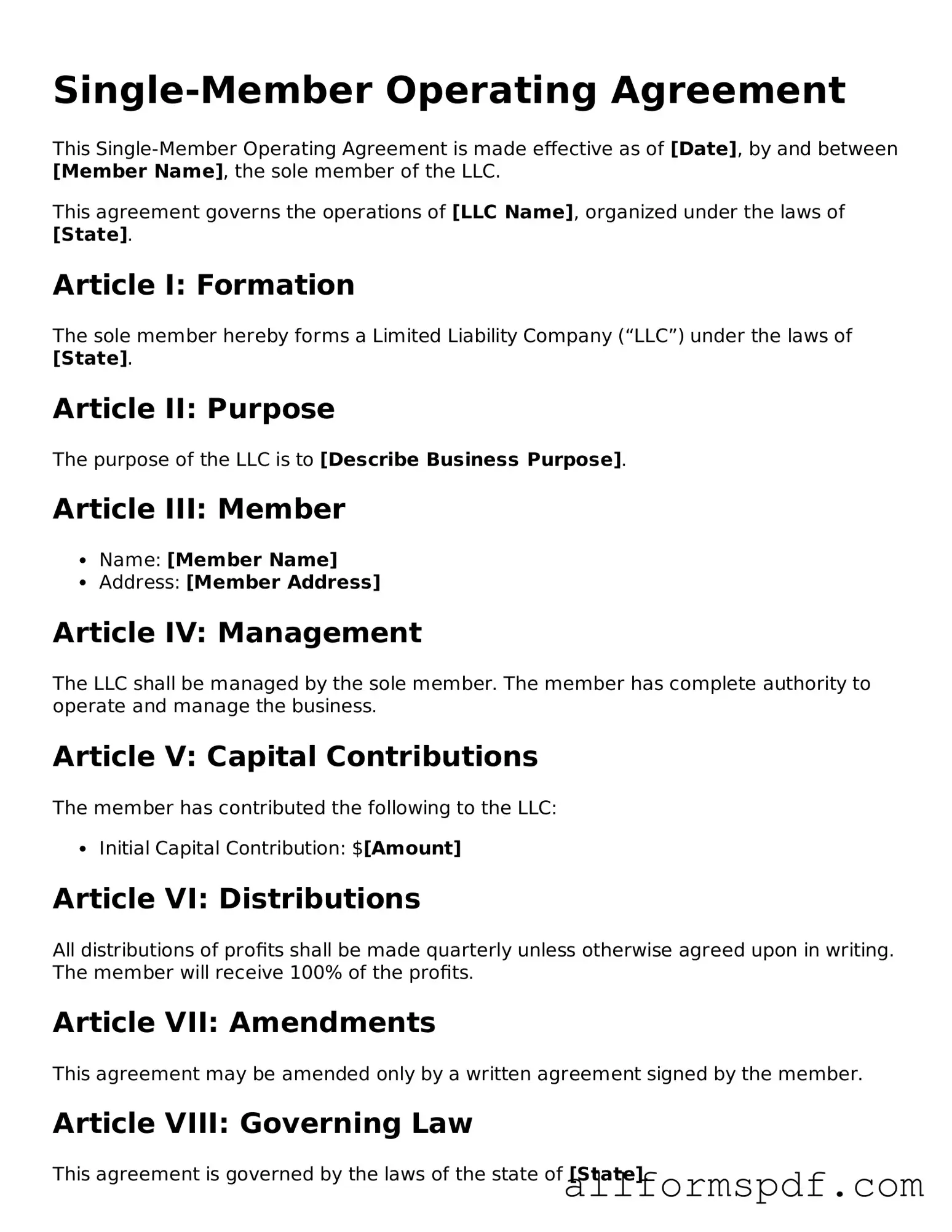Filling out a Single-Member Operating Agreement form can seem straightforward, but many individuals make common mistakes that can lead to complications down the road. One frequent error is failing to clearly define the purpose of the business. Without a specific purpose outlined, the agreement may lack clarity and lead to confusion about the business’s goals and operations.
Another common mistake is neglecting to include the member's name and contact information. This information is crucial, as it establishes the identity of the owner and ensures that all parties know who is responsible for the business. Omitting this detail can create legal ambiguity, making it difficult to enforce the agreement.
People often overlook the importance of detailing the management structure. While a single-member LLC may seem simple, it’s essential to specify how decisions will be made and who has the authority to act on behalf of the business. Failing to clarify this can lead to misunderstandings and disputes, even among solo owners.
Additionally, many individuals forget to include provisions for the handling of profits and losses. Clearly stating how profits will be distributed and how losses will be managed is vital for financial clarity. Without this information, the agreement may not provide a solid foundation for the business's financial operations.
Another mistake is not addressing the dissolution process. Life is unpredictable, and circumstances may arise that require the business to close. Outlining the steps for dissolution in the operating agreement can save time and reduce stress when the need arises. Ignoring this aspect can lead to complications and potential legal issues later on.
Lastly, many people fail to review and update their operating agreement regularly. As a business evolves, changes may occur that necessitate updates to the agreement. Keeping the document current is essential for ensuring it remains relevant and legally binding. Neglecting this can result in outdated terms that no longer reflect the business's operations.
